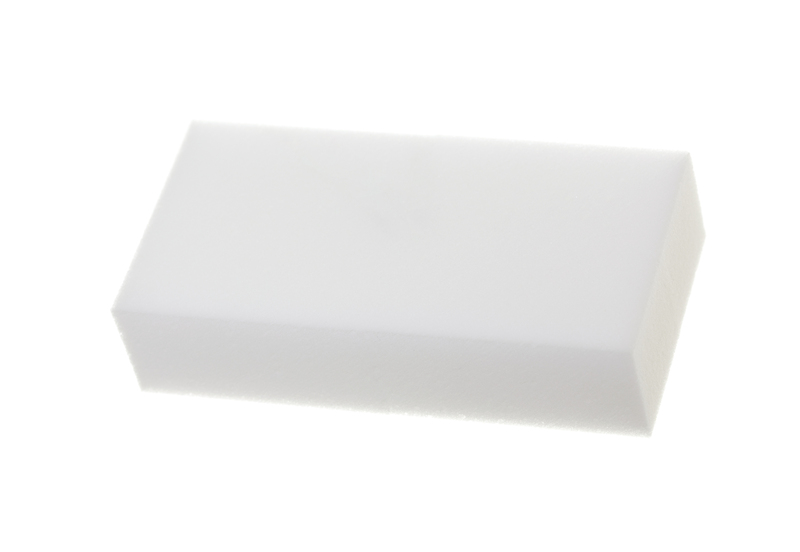Maximize Productivity: The Unseen Power of Workplace Air
Posted on 01/07/2025
Maximize Productivity: The Unseen Power of Workplace Air
Imagine walking into your office, greeted by a breath of fresh, invigorating air. You feel energized, focused, and ready to tackle the tasks ahead. Many businesses overlook the importance of air quality at the workplace, but research suggests that it is one of the most significant--but often invisible--drivers of productivity. In this comprehensive article, we unravel the unseen power of workplace air and its direct connection to employee well-being, efficiency, and overall business success.
Why Workplace Air Quality Matters in the Modern Office
Air quality is more than just comfort--it's a strategic asset in any working environment. With professionals spending up to a third of their day inside office buildings, the quality of the air they breathe can dramatically impact both health and output. According to the EPA, indoor air can be two to five times more polluted than outdoor air. This pollution doesn't just cause discomfort; it directly affects cognitive performance and productivity.
The modern workplace is filled with sources of airborne pollutants--from office equipment emissions to chemical cleaning agents and, of course, varying levels of ventilation. Understanding the impact of these factors is key to maximizing productivity through better air quality.
Key Reasons to Prioritize Workplace Air
- Enhanced cognitive function: Studies show that improved air quality can raise decision-making performance by up to 101%.
- Reduced absenteeism: Poor air increases sick days, affecting productivity and morale.
- Improved focus and concentration: Clean air reduces brain fog, boosting task completion rates.
- Greater employee morale: A fresh environment contributes to a positive mood and increased work satisfaction.

Understanding The Unseen Factors Affecting Office Air
Most office managers focus on obvious productivity solutions--better software, faster hardware, team building. But often, the invisible elements such as indoor air quality (IAQ) have a profound effect on the efficiency of the workforce. What exactly is lurking in the air at your workplace?
Common Workplace Air Pollutants
- Volatile Organic Compounds (VOCs): Emitted from office supplies, furniture, paints, and cleaning products. VOC exposure can lead to headaches, dizziness, and impaired cognitive functions.
- Particulate Matter (PM): Tiny particles that can cause respiratory problems and decrease energy levels.
- Biological Contaminants: Mold, bacteria, viruses, and pollen contribute to allergies and infectious diseases.
- Carbon Dioxide (CO2): High levels, common in poorly ventilated offices, can decrease alertness and critical thinking skills.
The Science Behind Air Quality and Productivity
There's a growing body of scientific evidence linking the air in our workplaces to our ability to concentrate, think critically, and produce high-quality work. In a breakthrough study by Harvard's T.H. Chan School of Public Health, small increases in ventilation rates (by simply bringing in more fresh air) resulted in significant boosts to cognitive scores and productivity.
What the Data Says
- 10% rise in productivity is linked to workplaces with excellent air quality versus those with poor air.
- Each 1,000 ppm increase in indoor CO2 can drop decision-making performance by up to 15%.
- Cleaner workplace air reduces the number of sick days by reducing virus and bacteria transmission.
These numbers clearly demonstrate the unseen power of the air you breathe and its measurable impact on organizational success.
How to Assess Your Workplace Air Quality
Maximizing productivity through air management starts with assessing your current setup. Here's a step-by-step strategy to gauge and improve the quality of your workplace air:
Step 1: Audit Ventilation Systems
- Inspect HVAC systems for cleanliness, regular filter changes, and adequate airflow.
- Ensure proper ventilation in all occupied spaces, not just meeting rooms or executive offices.
Step 2: Monitor Indoor Air Pollutants
- Use indoor air quality sensors to track VOCs, CO2, PM2.5, and humidity.
- Gather employee feedback regarding air freshness, odors, or health symptoms.
Step 3: Check for Mold and Moisture
- Look for water leaks, damp areas, or condensation which may foster mold and bacteria.
Step 4: Evaluate Cleaning and Maintenance Practices
- Opt for low-VOC cleaning agents and office materials.
- Schedule professional deep cleaning for carpets, upholstery, and ventilation ducts.
Best Practices to Maximize Productivity With Workplace Air Quality
Improving the air in your office is an actionable and affordable way to gain a competitive edge. Implement these proven strategies to unlock higher productivity and greater employee satisfaction:
1. Invest in Advanced Air Filtration
- HEPA filters capture fine particulates and allergens.
- Activated carbon filters remove odors and VOCs.
- Consider air purifiers for high-risk zones like conference rooms and shared spaces.
2. Maximize Natural and Mechanical Ventilation
- Open windows regularly to allow air circulation whenever possible.
- Upgrade mechanical HVAC systems for increased fresh air intake.
- Utilize energy recovery ventilators to balance air quality and energy savings.
3. Incorporate Biophilic Design
- Add live indoor plants--spider plants, peace lilies, and snake plants all help filter toxins and improve indoor oxygen levels.
- Design spaces to encourage daylight exposure, which naturally stimulates alertness and productivity.
4. Promote Good Hygiene and Cleanliness
- Encourage regular handwashing and respiratory hygiene among staff.
- Frequently disinfect high-touch surfaces and communal areas.
- Maintain humidity levels between 40-60% to minimize airborne virus survival and optimize comfort.
5. Monitor and Communicate Improvements
- Display air quality data in common areas to build awareness and trust.
- Share updates on system upgrades, cleaning routines, and air quality initiatives in employee newsletters.
Addressing Unique Air Quality Challenges in Modern Workplaces
The landscape of office work is rapidly evolving, and with it, potential air quality challenges.
Open Plan Offices and Collaborative Spaces
- High occupancy can lead to increased CO2 and noise-related stress.
- Invest in optimal airflow, sound-masking technologies, and air purifiers for shared environments.
Hybrid Work Models and Remote Work Returnees
- Stagger occupancy to avoid overloading ventilation systems.
- Regularly clean and ventilate areas that have been left unused for extended periods.
Seasonal Challenges
- Monitor for increased dust and pollen in spring and summer, and for mold in wet seasons.
- Adjust HVAC settings accordingly and use dehumidifiers if necessary.
The ROI of Optimal Workplace Air
Some might ask, "Is investing in better workplace air quality truly worth it?" The answer is unequivocally yes, not just from a wellness perspective but also for your organization's bottom line.
Quantifiable Benefits
- Fewer sick days: Employees in healthy indoor environments take 35% less time off due to illness.
- Better retention: Employee satisfaction and morale increase significantly in clean, comfortable environments, reducing costly turnover.
- Enhanced performance: Clean air supports cognitive functions, creativity, and decision-making.
For every dollar spent on improving ventilation and filtration, studies have found returns of $6 to $14 in increased productivity, reduced absenteeism, and healthcare savings.

Maximizing Productivity: Action Items for Facility Managers and Business Leaders
You don't have to overhaul your entire office building to take advantage of the unseen power of workplace air. Even incremental steps can deliver tangible improvements.
- Schedule an indoor air assessment with certified professionals to identify areas for improvement.
- Update maintenance schedules to ensure timely filter replacements and system inspections.
- Provide employees with access to windows or personal air purifiers where possible.
- Create policies encouraging the use of green, low-emission cleaning and office products.
Modern employees expect more from their work environment than just a desk and a chair--they seek wellness, comfort, and the tools to succeed.
The Future of Workplace Productivity: It's in the Air
Awareness about clean air in the office is growing rapidly, fueled by global health crises, new technologies, and the evolving expectations of a health-conscious workforce. Companies that prioritize excellent workplace air quality and invest in innovative air management strategies stand to thrive in the competitive landscape.
By harnessing the unseen but potent force of indoor air, businesses can cultivate a dynamic, resilient, and highly productive workforce. In the end, maximizing productivity isn't just about what your employees do--it's also about what they breathe.
Ready for a Breath of Fresh Success?
Take action today: Prioritize the power of workplace air to maximize productivity, foster innovation, and secure the well-being of your greatest asset--your people.





